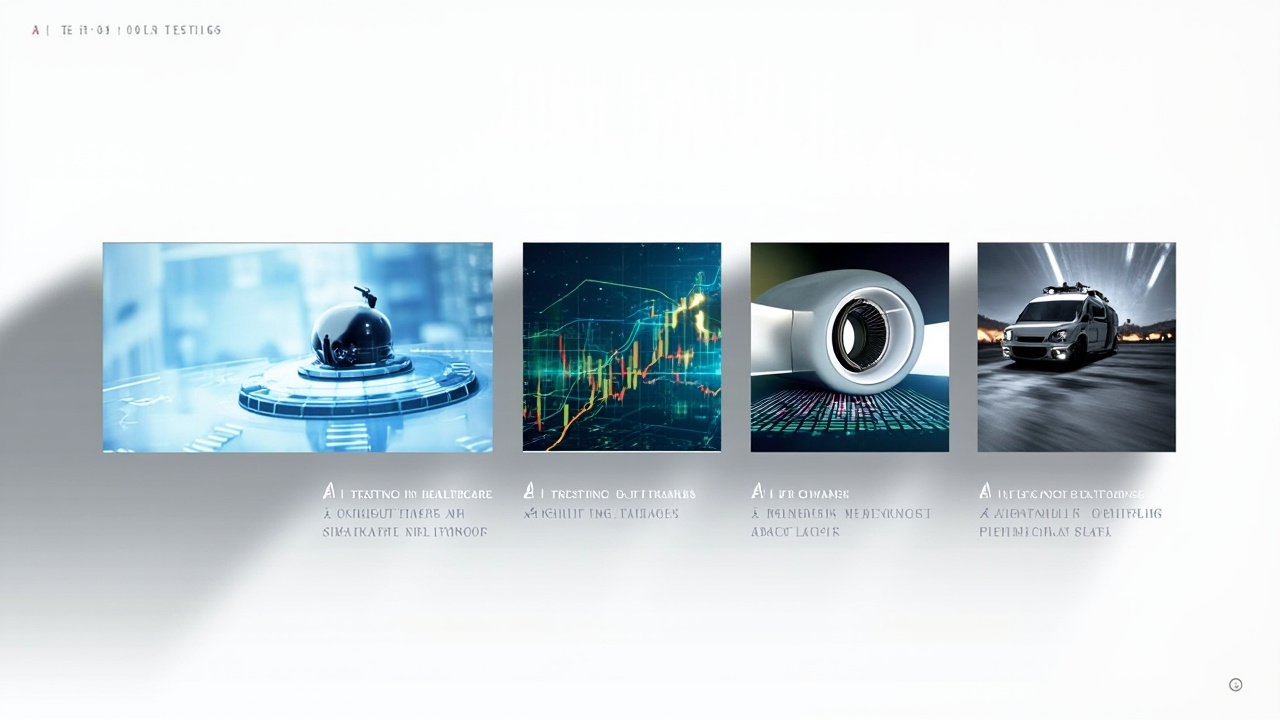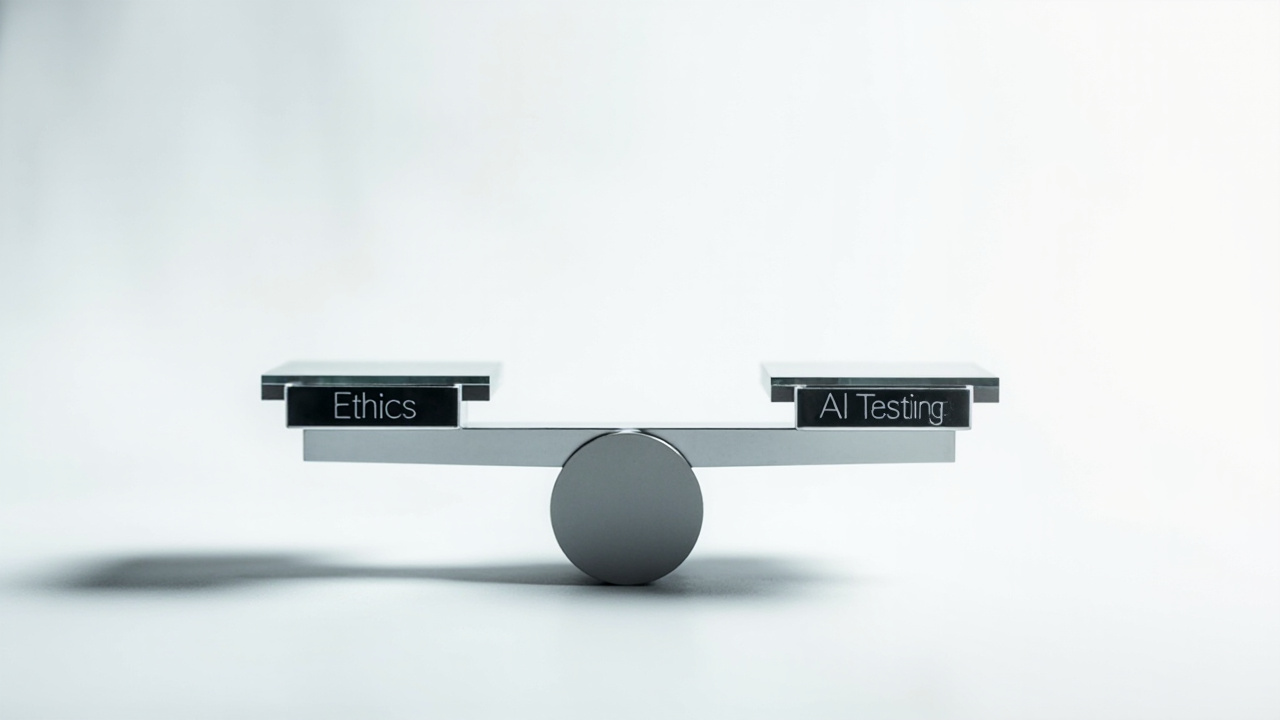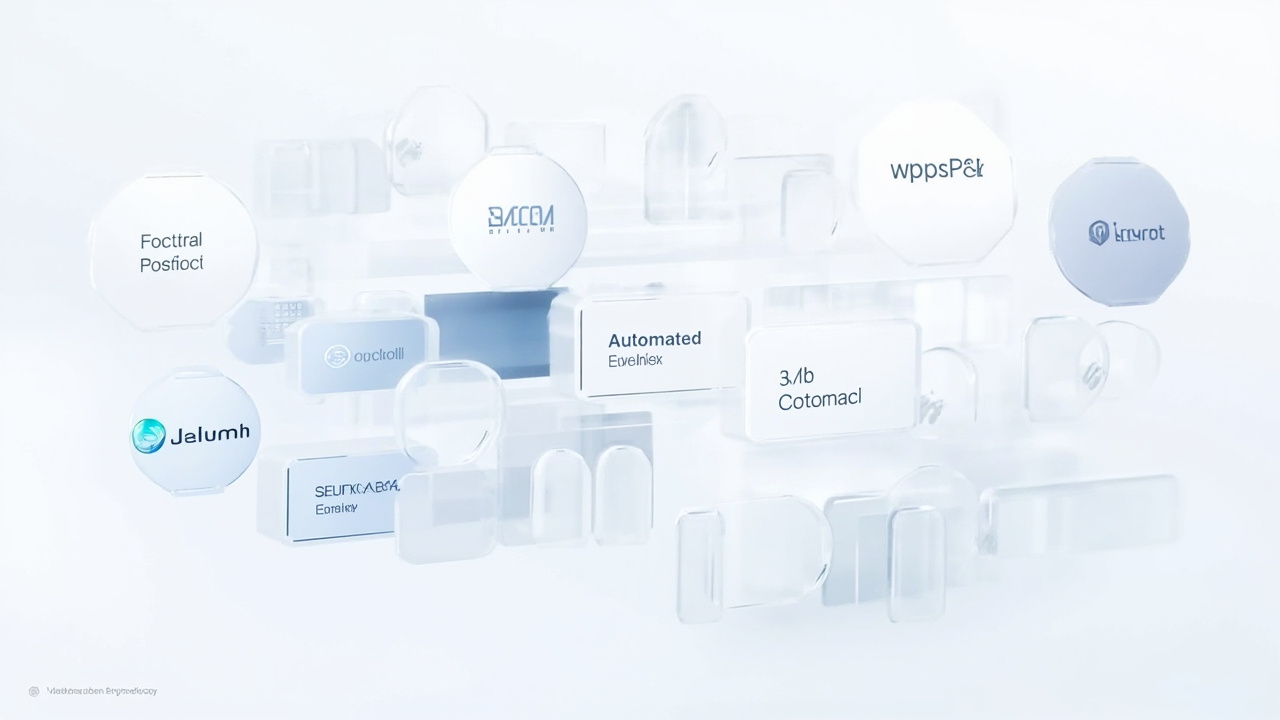Artificial Intelligence (AI) is rapidly transforming the landscape of technology and business. As AI systems become more sophisticated and integral to our daily lives, the importance of ensuring their accuracy, reliability, and fairness intensifies. This is where AI testing plays a crucial role. But what exactly does AI testing entail, and why should it matter to you?
In today’s fast-paced digital world, organizations are racing to integrate AI solutions into their operations. However, this rush often overlooks a critical aspect how these AI systems are tested. This oversight can lead to significant issues, from biased decision-making processes to severe operational failures. Understanding the intricacies of AI testing is not just beneficial but essential for anyone involved in deploying AI technologies.
This blog post will take you on a journey through the multifaceted world of AI testing. We’ll delve into its core components, explore the challenges faced by developers and testers, and provide insights into the best practices shaping the industry. Whether you’re a seasoned professional or a curious newcomer, this comprehensive analysis will equip you with the knowledge to navigate the complex terrain of AI testing effectively.
Understanding the Fundamentals of AI Testing

AI testing is a specialized field that focuses on evaluating the functionality, performance, and ethical implications of AI systems. Unlike traditional software testing, which often deals with static code and predictable outputs, AI testing grapples with dynamic algorithms capable of learning and evolving over time. This section will unravel the foundational concepts of AI testing, setting the stage for a deeper exploration.
The Unique Challenges of AI Systems
AI systems are inherently complex due to their reliance on large datasets and sophisticated algorithms. These systems are designed to learn from data, adapt their behavior, and make autonomous decisions. Consequently, testing AI systems involves not just verifying code correctness but also assessing data quality, model accuracy, and ethical considerations.
Testing an AI system is akin to evaluating a human student. You don’t just check if they can solve a particular problem; you also assess their reasoning process, adaptability, and biases. This complexity introduces unique challenges in AI testing, such as the potential for model drift, where an AI’s performance deteriorates over time as real-world data diverges from training data.
Key Components of AI Testing
To effectively test AI systems, several components must be considered
- Data Testing: Ensuring the quality and representativeness of the data used to train AI models.
- Model Testing: Evaluating the accuracy, robustness, and fairness of the AI models.
- Performance Testing: Assessing the AI system’s efficiency and scalability under various conditions.
- Ethical Testing: Examining the AI system for biases and ensuring compliance with ethical standards.
Each component plays a critical role in the overall testing process, contributing to the development of trustworthy AI systems.
“AI testing is not just about code verification; it’s about ensuring that AI systems are reliable, fair, and aligned with human values.”
Practical Steps in AI Testing
To conduct thorough AI testing, a systematic approach is essential. This involves defining clear testing objectives, selecting appropriate metrics, and employing a combination of manual and automated testing techniques. Testers must also stay informed about the latest advancements in AI testing tools and methodologies to maintain a competitive edge.
Transitioning from understanding the basics, we’ll now explore how AI testing is implemented in real-world scenarios and the common pitfalls to avoid.
Real-World Applications and Case Studies in AI Testing

AI testing is not just a theoretical exercise; it has tangible implications for industries worldwide. From healthcare to finance, AI systems are being deployed to streamline operations and enhance decision-making processes. In this section, we’ll examine real-world applications of AI testing and explore case studies that highlight its impact.
AI Testing in Healthcare
The healthcare sector has witnessed a surge in AI applications, from diagnostic tools to patient management systems. However, the stakes are incredibly high, as errors in AI predictions can lead to life-altering consequences. AI testing in healthcare involves rigorous validation of models to ensure accuracy and safety.
A notable example is the use of AI in imaging diagnostics. By testing AI models with diverse datasets and validating their predictions against expert radiologists, healthcare providers can enhance diagnostic accuracy while reducing the risk of misdiagnosis.
Financial Services and AI Testing
In the financial sector, AI is employed for fraud detection, credit scoring, and algorithmic trading. These applications require meticulous testing to safeguard against financial losses and regulatory breaches. Testing focuses on model robustness and bias detection to ensure equitable decision-making.
Consider a case where an AI model used for credit scoring was found to be biased against certain demographic groups. Through comprehensive testing, the bias was identified and rectified, leading to fairer outcomes for all applicants.
“Effective AI testing in finance not only prevents costly errors but also builds trust in AI-driven decision-making processes.”
AI Testing in Autonomous Vehicles
Autonomous vehicles represent one of the most complex AI systems, relying on real-time data from various sensors. Testing these systems involves simulating diverse driving scenarios to evaluate safety and responsiveness. Ensuring that AI systems in vehicles can handle unpredictable real-world situations is paramount for passenger safety.
Transitioning from industry applications, the next section will delve into the ethical dimensions of AI testing and why they are critical in the modern age.
The Ethical Imperatives of AI Testing

Ethics in AI testing is a growing concern as AI systems increasingly influence societal norms and individual lives. This section will explore the ethical imperatives of AI testing, focusing on fairness, transparency, and accountability.
The Quest for Fair AI Systems
AI systems have the potential to reinforce existing biases if not carefully tested. Testing for fairness involves scrutinizing AI models for biased outcomes and ensuring diverse representation in training datasets. This step is crucial in preventing discrimination and ensuring equitable treatment across different demographic groups.
For instance, an AI system used in recruitment was found to favor male candidates over females. Through ethical testing, the bias was identified and the model was retrained to ensure fairness in hiring practices.
Transparency and Accountability
Transparency in AI testing involves making the decision-making processes of AI systems understandable to humans. This is achieved through techniques such as explainable AI (XAI), which provides insights into how AI models arrive at their conclusions.
Accountability is equally important, as it holds developers and organizations responsible for the outcomes of their AI systems. By incorporating ethical testing into the development lifecycle, organizations can demonstrate their commitment to responsible AI use.
“In the quest for ethical AI, transparency and accountability are not just ideals; they are necessities for building public trust.”
Addressing Ethical Challenges in AI Testing
Ethical testing is not without its challenges. Testers must navigate complex issues such as privacy concerns, consent, and the potential for unintended consequences. By adopting a proactive approach and staying informed about ethical guidelines, testers can mitigate these risks and contribute to the development of ethical AI systems.
As we conclude our exploration of ethical considerations, the next section will provide insights into the tools and technologies advancing the field of AI testing.
Cutting-Edge Tools and Technologies in AI Testing

The field of AI testing is evolving rapidly, with new tools and technologies emerging to address the unique challenges it presents. In this section, we’ll explore some of the most cutting-edge tools and technologies that are shaping the future of AI testing.
Automated Testing Frameworks
Automated testing frameworks are increasingly being adopted to streamline the AI testing process. These frameworks allow testers to execute repetitive tasks efficiently, freeing up resources for more complex testing activities. Popular frameworks such as TensorFlow Extended (TFX) and Apache Mahout provide robust capabilities for testing AI models at scale.
Simulation and Modeling Tools
Simulation tools enable testers to create virtual environments for testing AI systems under controlled conditions. These tools are particularly useful for testing autonomous systems, such as drones and self-driving cars, where real-world testing may be impractical or unsafe.
“Simulation tools offer a safe and controlled environment for testing AI systems, allowing for the exploration of scenarios that may be difficult to replicate in the real world.”
Explainable AI (XAI) Technologies
Explainable AI technologies are designed to enhance the transparency of AI systems by providing insights into their decision-making processes. Tools such as LIME (Local Interpretable Model-agnostic Explanations) and SHAP (SHapley Additive exPlanations) are leading the way in making AI systems more interpretable and trustworthy.
Transitioning from tools and technologies, the next section will offer practical guidance on implementing AI testing best practices to ensure successful outcomes.
Implementing Best Practices for Successful AI Testing

Implementing best practices in AI testing is essential for ensuring the reliability and effectiveness of AI systems. This section will provide practical guidance on adopting best practices to enhance AI testing outcomes.
Establishing Clear Testing Objectives
Before embarking on AI testing, it’s crucial to establish clear testing objectives. These objectives should align with the overall goals of the AI project and consider factors such as model accuracy, performance, and ethical considerations. By defining objectives upfront, testers can focus their efforts and measure success effectively.
Incorporating Continuous Testing
Continuous testing is a best practice that involves integrating testing activities throughout the AI development lifecycle. This approach ensures that issues are identified and addressed early, reducing the risk of costly errors later on. Continuous testing also enables testers to keep pace with the rapid evolution of AI technologies.
“Continuous testing is not just a method; it’s a mindset that embraces agility and adaptability in the fast-paced world of AI development.”
Emphasizing Collaboration and Communication
Effective AI testing requires collaboration and communication among cross-functional teams, including developers, data scientists, and testers. By fostering a culture of collaboration, organizations can leverage diverse expertise and perspectives to enhance testing outcomes.
As we wrap up our exploration of best practices, the final section will offer a compelling conclusion and call-to-action, encouraging readers to delve deeper into the world of AI testing.
Conclusion: The Future of AI Testing

AI testing is an evolving field that holds the key to unlocking the full potential of AI technologies. As AI systems become more prevalent, the demand for rigorous testing will only grow. By understanding the fundamentals, exploring real-world applications, and adopting best practices, individuals and organizations can navigate the complexities of AI testing with confidence.
In this comprehensive guide, we’ve delved into the multifaceted world of AI testing, highlighting its importance, challenges, and opportunities. From ethical considerations to cutting-edge tools, AI testing is a dynamic and ever-changing landscape that requires continuous learning and adaptation.
As you embark on your AI testing journey, remember that the goal is not just to verify correctness but to build AI systems that are reliable, fair, and aligned with human values. By doing so, you contribute to a future where AI technologies enhance our lives while upholding the highest ethical standards.
“AI testing is more than a technical challenge; it’s a commitment to building a future where AI serves humanity responsibly and ethically.”
For those eager to explore the topic further, consider engaging with AI testing communities, attending industry conferences, and staying informed about the latest advancements in the field. The journey of AI testing is a rewarding one, filled with opportunities to make a meaningful impact.
Explore More on This Topic
Interested in diving deeper into this subject? Connect with experts or explore additional resources to expand your understanding.
If the link above does not work, please visit: https://calendly.com/dm-csimplifyit/30min?month=2025-05